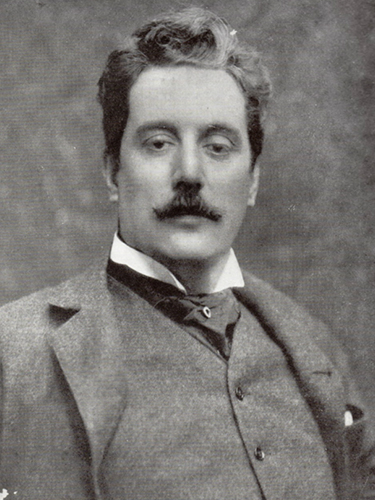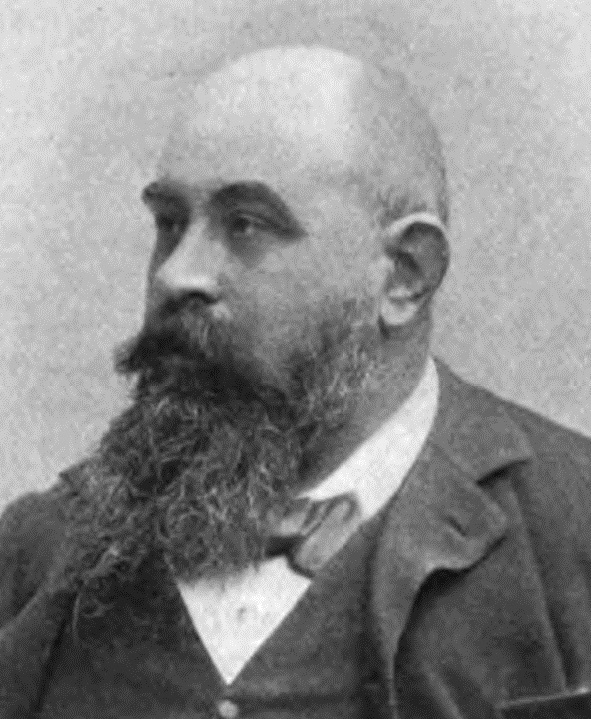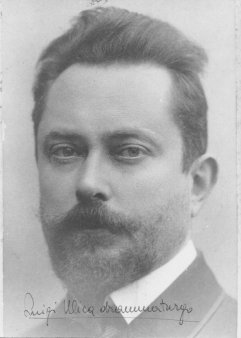
Madama Butterfly
Welcome to Lyric's learning resources!
This is your all-access pass to the world of opera and musical theater. Scroll down to access the following resources to help you learn more.
Overview
Then and Now: Discussing Butterfly's Problematic Past
Musical Highlights
Historical and Cultural Timeline
Composer and Librettists
Overview
Then and Now: Discussing Butterfly's Problematic Past
Madama Butterfly was written in and takes place during the early 20th century. Cultural and political norms in Japan were shifting. The country had recently opened itself to trade with the rest of the world and European audiences were excited by stories of Japan and the East. Since the opera’s premiere in 1904, the world has changed and the political and social climate between Japan and the United States has transformed dramatically. Thus, Madama Butterfly carries different meanings today than when it premiered.
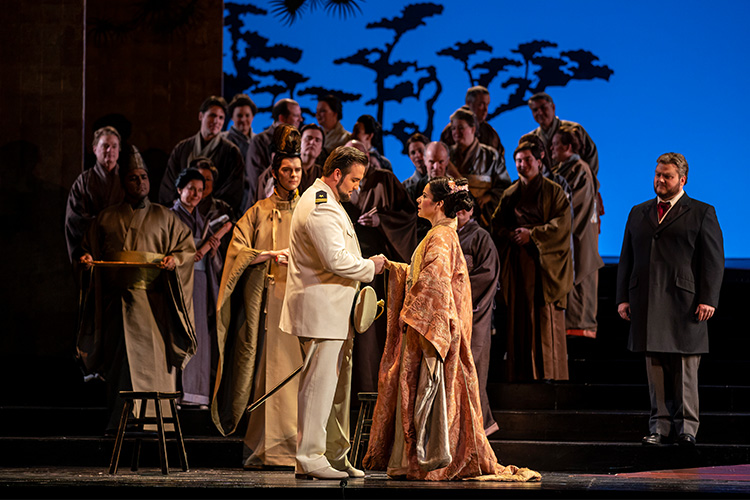
It is important to understand that this opera is a fictional work of art that is specific to its time. It is also important to understand that it was the product of Euro-centric perceptions of both Japanese and American culture. But through the lens of history, many of the cultural references in the work now feel outdated (and indeed many are). We have had many years of cultural exchange and opportunities to connect with Japan and the Japanese people. Other themes presented in the piece, like women’s rights and society’s perception of the acceptable dynamics between men and women, have also evolved.
Following the performance, you might consider exploring these issues with your class. The prompts below might help your students make modern connections with the opera:
- Did you notice anything in the opera that felt outdated or culturally insensitive? Consider the libretto (words of the opera), character actions, music, and production elements (sets and costumes).
- Do the piece’s flaws lie mainly with the composer’s or librettists' imagined vision of Japan? Is the opera a casualty of the time period in which it was written?
- If you were in Cio-Cio-San’s situation, what would you have done?
- If this story took place in 2020, Cio-Cio-San would likely have had more options for childcare and support. Do you think she would have made the same choices? Why or why not?
- Do you believe that Pinkerton is really in love with Cio-Cio-San? Do you believe outside influences prompted Pinkerton to make his choices or is he essentially a misogynist?
- If you were going to produce Madama Butterfly today, with a contemporary 21st century perspective, what changes would you make and why?
“Dovunque al mondo”
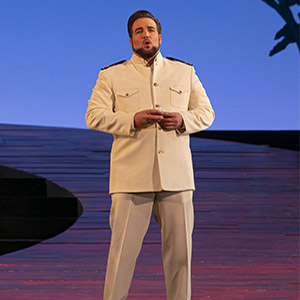
Pinkerton sings that he’s not satisfied with his life at sea unless he takes “a pretty flower on every shore” (meaning a woman at every port he visits). The rhythms of the “Star Spangled Banner” underscore the expression of Lieutenant Pinkerton’s misogynist worldview.
Things to listen for
-
The aria begins with an orchestral quotation of the “Star Spangled Banner.” At the time of the opera’s premiere, this was not the National Anthem of the United States; it was a song affiliated with the U.S. Navy.
-
On the word “sprezzando” the phrase rises to the highest note in this excerpt. Why might Puccini have chosen to do this? What does it say about Pinkerton?
"Quanto Cielo"

Sung by the chorus, Cio-Cio-San and Sharpless
Offstage we hear the arrival of Cio-Cio-San and a chorus of female attendants. You can hear Butterfly’s excitement, but also her hesitation. She is walking slowly, taking in every detail of nature. Is she delaying meeting Pinkerton or is she creating a sense of anticipation?
Things to listen for
-
This moment in the opera features the harp in the orchestra. Listen for the chorus, their lines imitate the upward arpeggios of the harp. An arpeggio a serious the notes that make up a chord, but are played in succession instead of all at once.
-
Cio-Cio-San’s highest and longest-held note in this excerpt is at the end. What word is Puccini emphasizing?
“Ah! dolce notte”
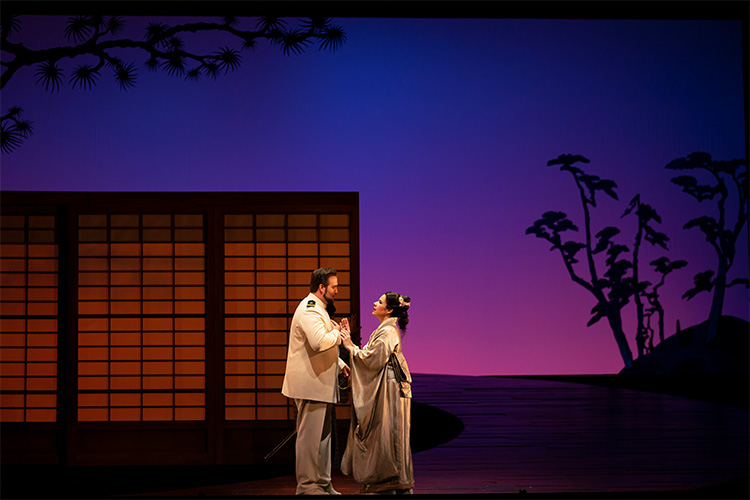
Sung by Sung by Pinkerton and Cio-Cio-San
In the Act 1 finale, Cio-Cio-San has just been renounced by her family. Pinkerton tries to console her. She is sad, but she is in love with Pinkerton. She sees the beauty of nature and the stars, which makes her feel less alone.
Things to listen for
-
Much like the previous example, Cio-Cio-San is accompanied by the harp.
-
When Cio-Cio-San and Pinkerton sing together in unison (but an octave apart), pay attention to the words (and what might not be said). She sings about the stars being like caring eyes. He sings about embracing her while she trembles/shivers. What do you think Cio-Cio-San might be thinking in the moment?
“Un bel dí vedremo”
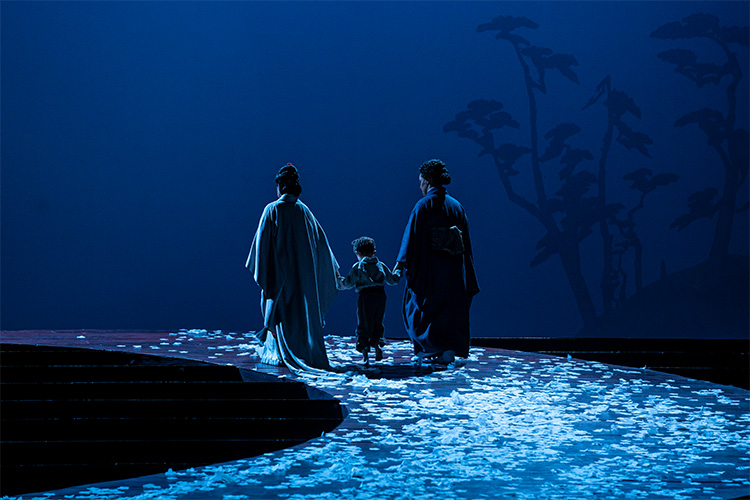
Sung by Cio-Cio-San
In act 2, Cio-Cio-San's maid, Suzuki, does not believe that Pinkerton will return. Cio-Cio-San is optimistic and sings of an imaginary scene in which her long-lost love comes back to her.
Things to listen for
-
Three years have passed, and she now goes by Madame Pinkerton. Her singing no longer features the harp. Her music is less “Japanese-sounding” as she is trying to be more “American.”
-
In the final moment in this excerpt, Cio-Cio-San sings the boldest and most triumphantly. Why is that?
Humming Chorus
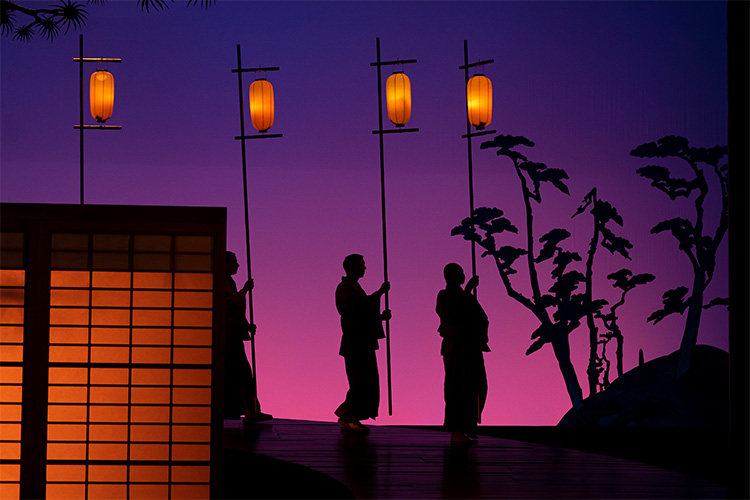
Sung by the chorus
Pinkerton returns, but not as the loving husband Cio-Cio-San imagined. After seeing Pinkerton’s ship dock in the harbor, she waits in lone vigil. The sailors are quietly humming. While far away from Cio-Cio-San, their melancholy music conveys her anticipation, excitement and anxiety.
Things to listen for
-
The accompaniment in the orchestra is a repeating pattern that helps to show the monotony of the soldiers’ work. This rhythm could also hint that Pinkerton and his wife are slowly making their way up the hill to Cio-Cio-San’s house.
-
Fans of musical theater might find this excerpt familiar. This melody was borrowed for the song “Bring Him Home” from Les Misérables.
Finale
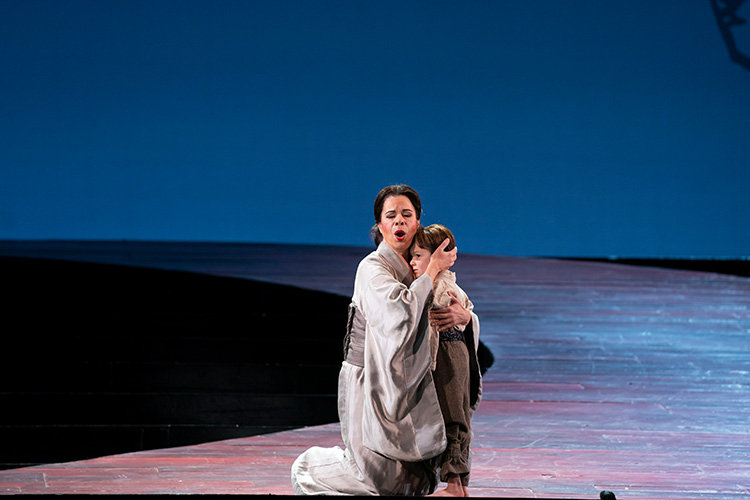
Sung by Pinkerton
Cio-Cio-San is a divided woman. She wants to be Mrs. Pinkerton, but she knows that she will always be a part of Japan. She wants what is best for her child, but can't imagine life without him. Ultimately, she takes her own life. In this final moment of the opera, Pinkerton arrives and realizes what he lost. He sings her name as she dies.
Things to listen for
-
The music of the finale is in a Japanese-style. This clearly indicated that Cio-Cio-San, despite her best efforts to be “American,” was, and will forever be, Japanese.
-
The orchestra at the end has a very dark sound, but the music is not sad. It is almost triumphant. Why do you think the Puccini chose to end in this fashion?
Historical and cultural timeline
Photos: Todd Rosenberg
